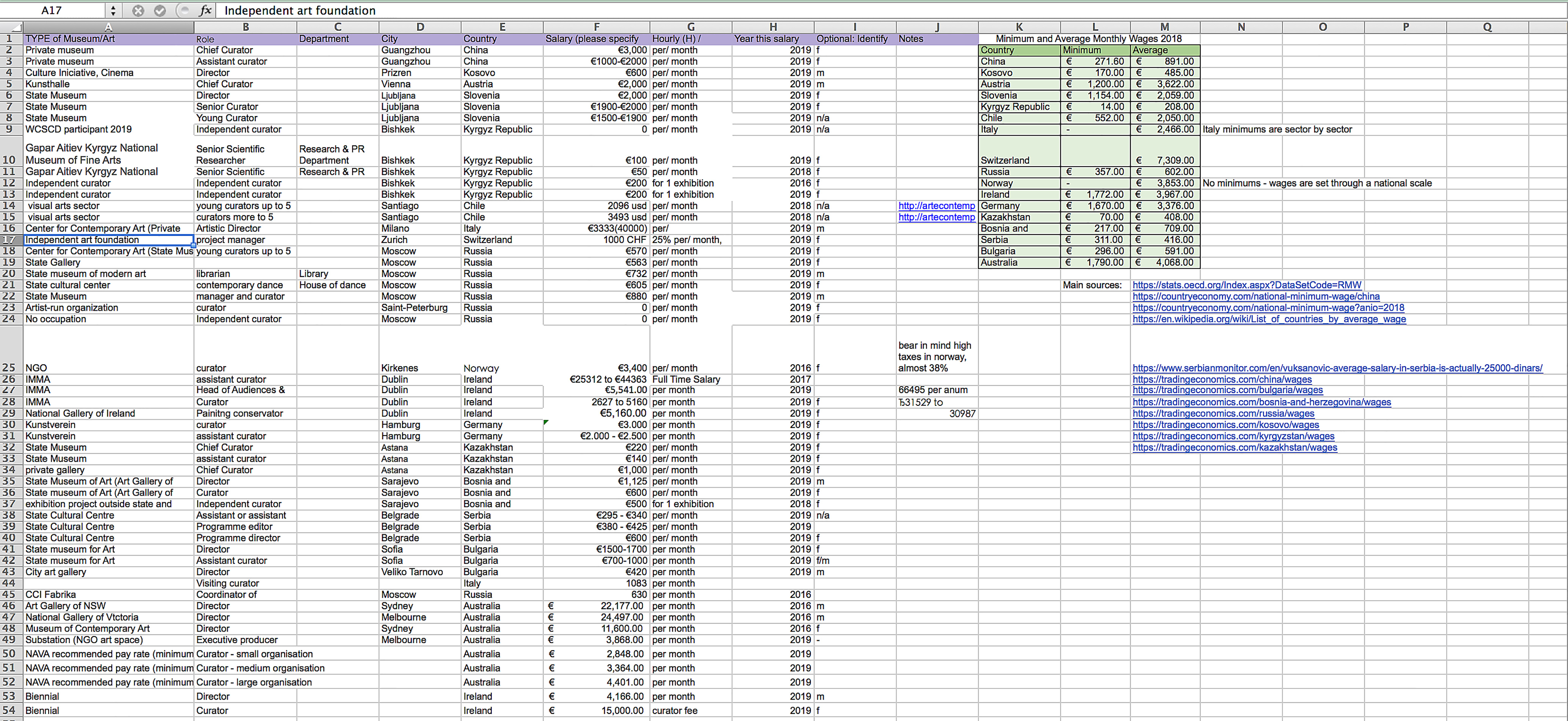Earlier this year, a spreadsheet originating in the USA was circulated within the international arts community detailing the salaries of various roles at museums, galleries and other arts institutions, and with a request for arts workers to add anonymous details of their own salaries to the spreadsheet. At the time of writing, that spreadsheet now contains over 3200 entries, the majority of which are from the USA, but also other countries such as Canada, the UK, Germany, Switzerland and Mexico. The accuracy of the data is unclear as contributors are anonymous and are encouraged to share as much or as little as they are comfortable with
The purpose of the spreadsheet, titled Arts + All Museums Salary Transparency 2019, is to bring an unprecedented level of transparency to the arts in terms of pay and to open up a dialogue between arts workers, with the hope of bringing about positive change in what is, traditionally, a relatively low-paid industry.
At WCSCD 2019 we saw the importance of such a dialogue and discussed salaries with many of the curators and arts workers we met during the program, ultimately creating our own anonymous salary spreadsheet. The WCSCD 2019 Salary Spreadsheet includes salary information for a number of countries not currently found in the original spreadsheet or only mentioned a very small number of times, such as Serbia, Russia, China, Kazakhstan, Kyrgyz Republic, Bosnia and Herzegovina, and Slovenia. It also includes information about general average and minimum salaries in each of the countries listed in order to illustrate how the salaries of arts workers compare to general salaries.
In what is unlikely to come as a surprise to those who work in the arts, the WCSCD 2019 Salary Spreadsheet suggests that arts salaries often fail to reach average salaries and, in a number of countries, struggle to even meet recognised minimum standards.
Discussions about salaries during the WCSCD program also uncovered other issues, including the lack of written agreements between funders and curators regarding curatorial fees, non-payment of agreed curatorial fees, and changes being made to the funding of projects without notifying curators in advance.
The more that discussions around salaries and working conditions become the norm, the better it will be for arts workers. As Michelle Millar Fisher, an assistant curator in the European decorative arts and design department of the Philadelphia Museum of Art, and one of the people who started the original spreadsheet, said: “If you don’t do it, everything stays the same. Sometimes it takes just one tiny action. Solidarity is the only way to affect great change.”
text by Shasta Stevic

